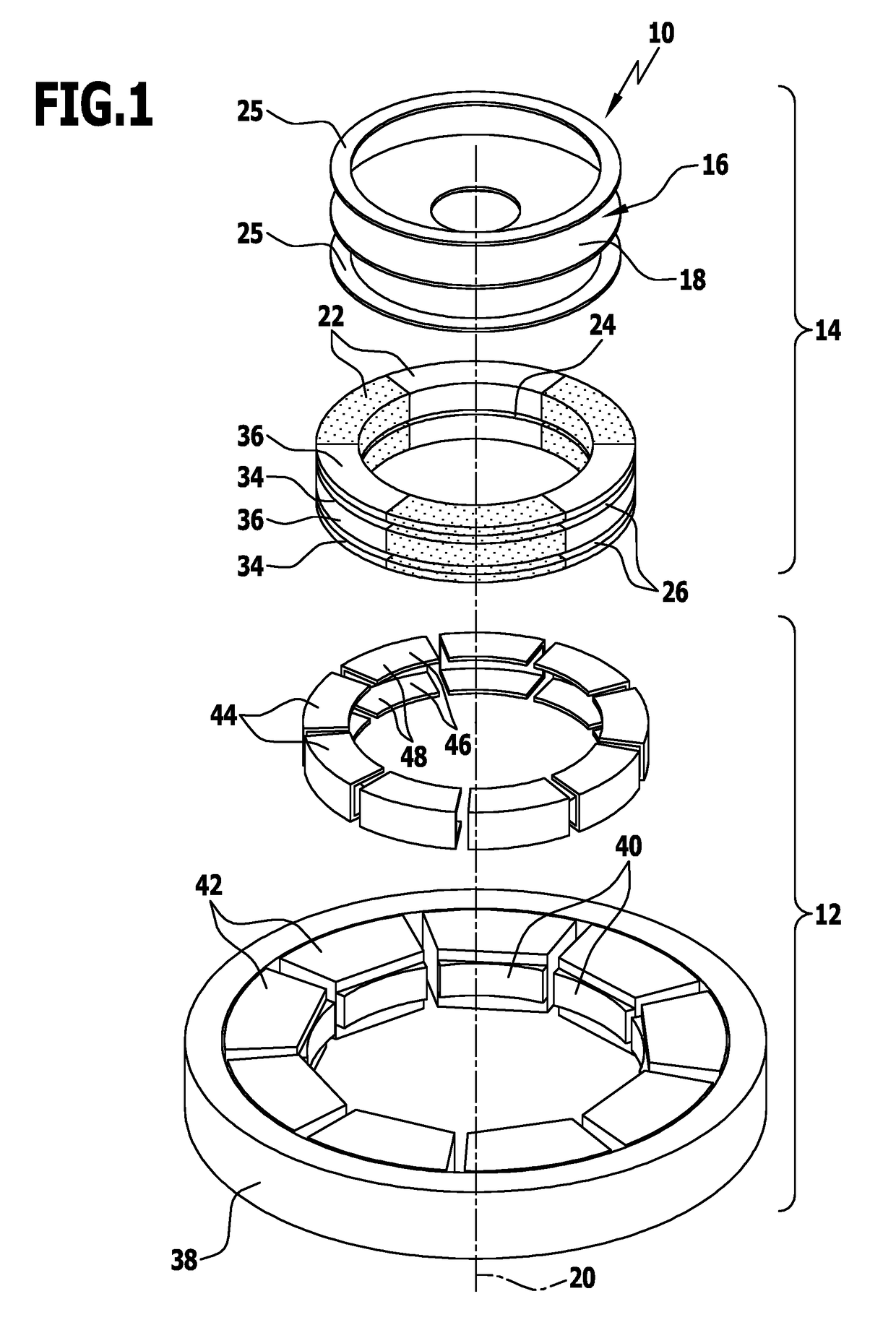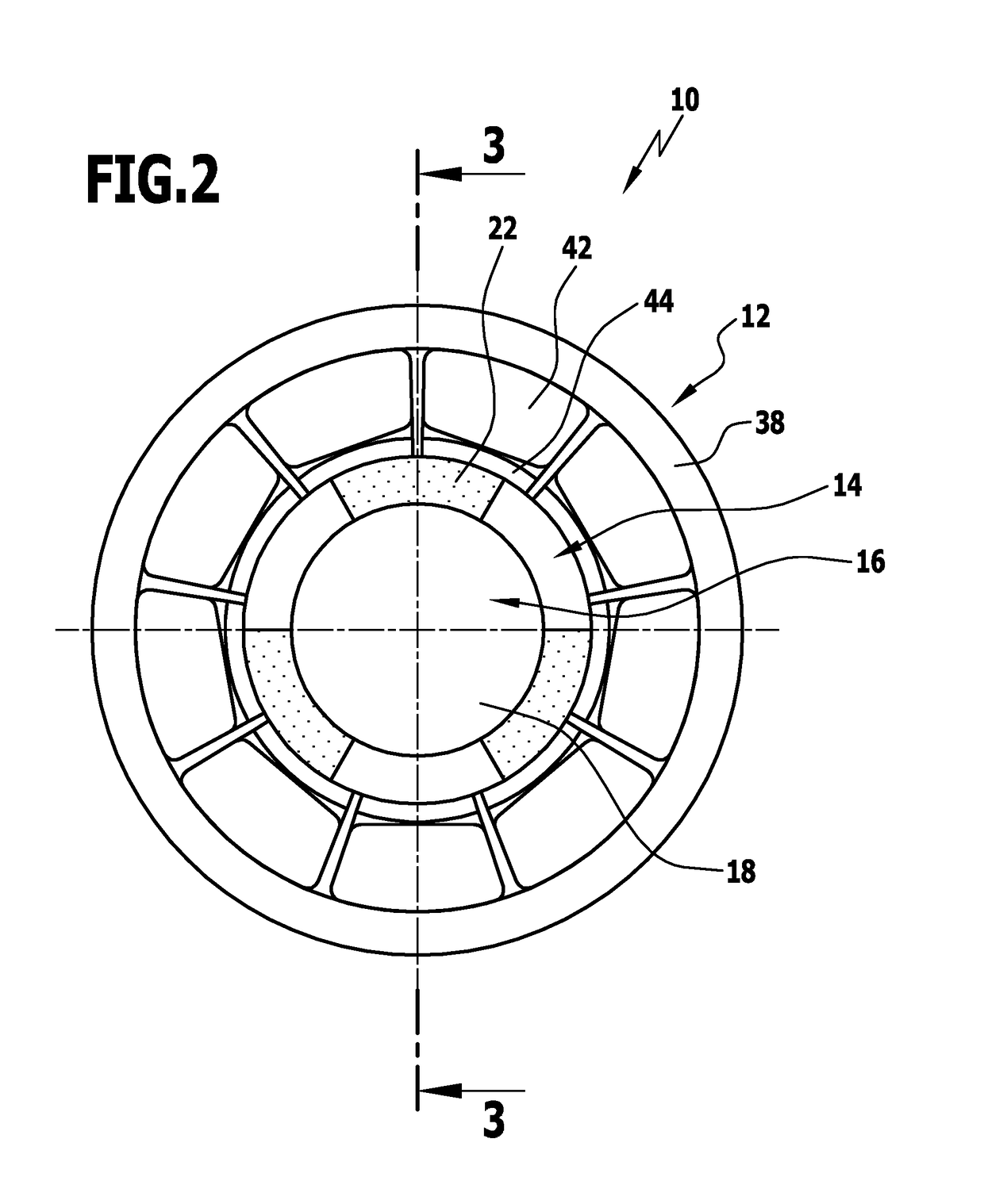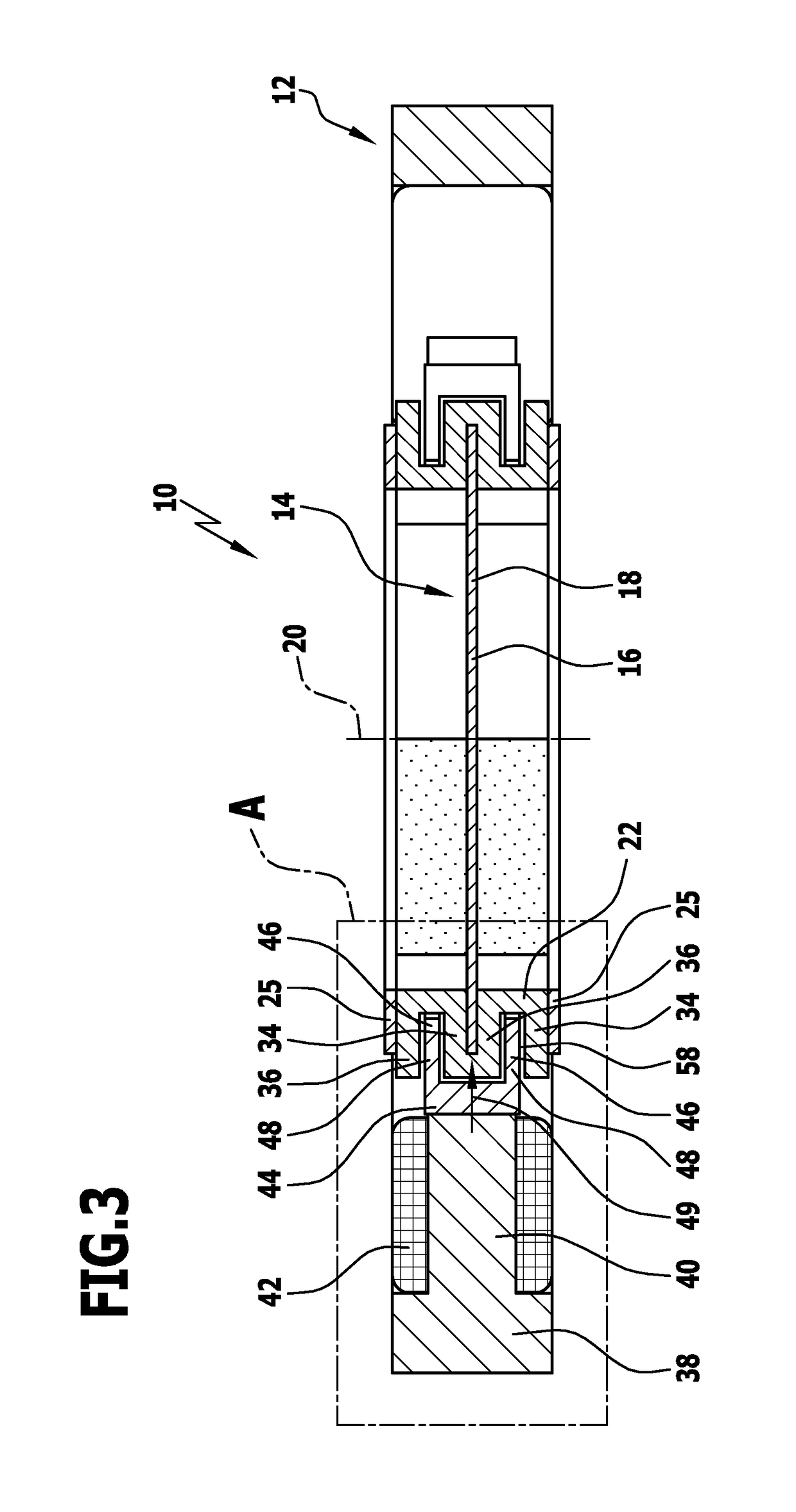Stator-rotor device for an electrical machine
a technology of rotating gears and electrical machines, which is applied in the direction of dynamo-electric components, dynamo-electric circuit shapes/forms/construction, dynamo-electric machines, etc., can solve the problem of requiring the use of relatively expensive magnets, and achieve the effect of compact construction and inexpensive production
- Summary
- Abstract
- Description
- Claims
- Application Information
AI Technical Summary
Benefits of technology
Problems solved by technology
Method used
Image
Examples
Embodiment Construction
[0060]FIGS. 1 to 4 show a first advantageous embodiment of a stator-rotor device according to the invention, identified by the reference numeral 10, hereinafter termed device 10. The device 10 can be used in particular in an electric motor.
[0061]The device 10 includes a stator 12 and a rotor 14. The rotor 14 includes a carrier 16, which is here configured as a disc 18. The disc 18 defines a plane and a rotation axis 20 of the rotor 14. “Radially” and “axially” should be understood here as referring to the rotation axis 20.
[0062]In addition the rotor 14 includes a plurality of magnets 22. Six magnets 22 for example are provided here. The magnets 22 here are preferably injection-moulded magnets. The injection-moulded magnets include magnetic particles, for example ferrite magnetic particles, embedded in a matrix, for example in a plastic material. The magnets can thereby be produced in an inexpensive and technically simple manner, and in particular can be shaped. Preferably the partic...
PUM
 Login to View More
Login to View More Abstract
Description
Claims
Application Information
 Login to View More
Login to View More - R&D
- Intellectual Property
- Life Sciences
- Materials
- Tech Scout
- Unparalleled Data Quality
- Higher Quality Content
- 60% Fewer Hallucinations
Browse by: Latest US Patents, China's latest patents, Technical Efficacy Thesaurus, Application Domain, Technology Topic, Popular Technical Reports.
© 2025 PatSnap. All rights reserved.Legal|Privacy policy|Modern Slavery Act Transparency Statement|Sitemap|About US| Contact US: help@patsnap.com



